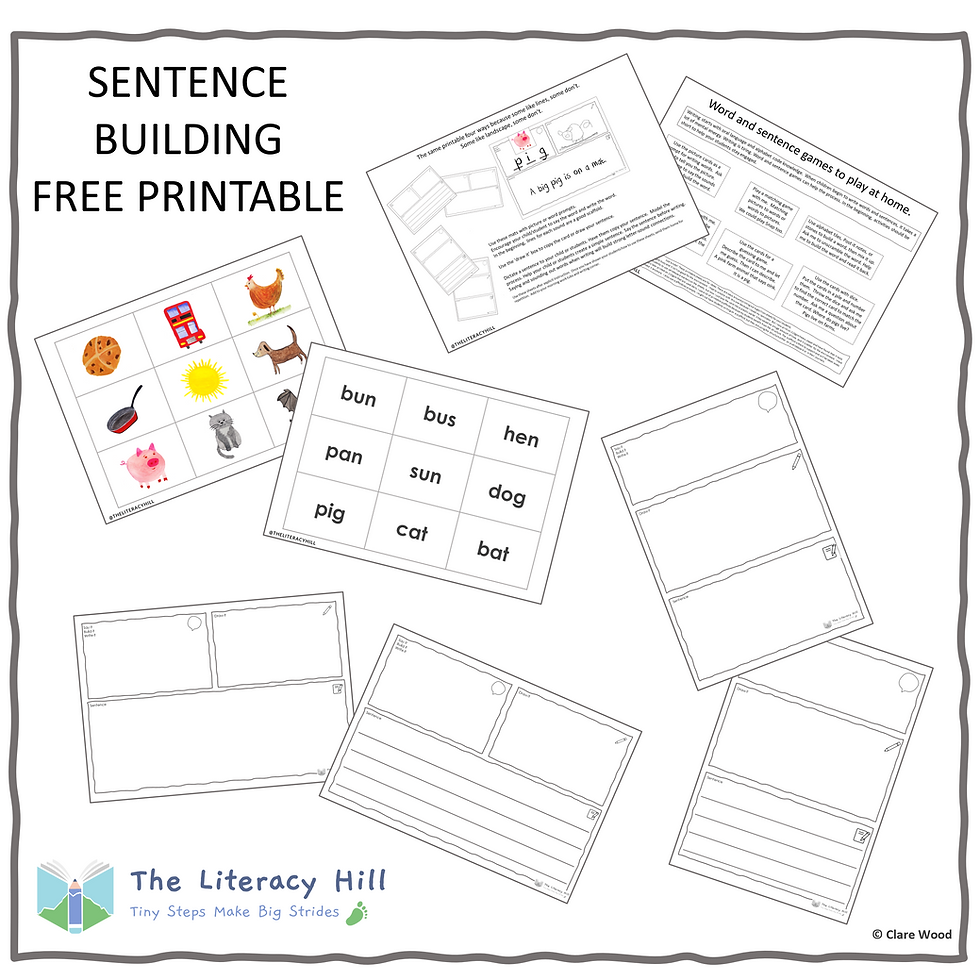FIRST STEPS IN WORD BUILDING
- Developers Devzmelbourne

- Sep 5, 2022
- 4 min read

I shared a word building sketch note recently, and lots of questions about segmenting and blending followed. How do you take the first steps in word building? Read on to find out more and download a free movable alphabet and Elkonin sound boxes.

Learning to read and spell starts with the sounds. The smallest discrete unit of sound within oral words is called a phoneme. Working with phonemes to build small decodable words is the most effective start.
Try word building as a playful, explicit learning activity in your home.
I use the movable alphabet as a scaffold to ease the load. It’s hard to write, spell and read in the early days. The movable alphabet is a free download available in my free stuff tab here
In the beginning, isolating sounds is hard work for most children
Children have to be able to hear the sounds in words before they can segment words into units of sound and match these to the letter symbols to read. Check out an earlier post all about listening games here.
In the beginning, short words that only use the basic code A-Z work best. These words are easier to manipulate, pull apart and blend back together. Segmenting words into phonemes can be tricky. In the early days, if you ask a student how many sounds in the word map? You might get one as the answer. It happens all the time; it is OK, just model how many sounds there are–say the word precisely and slowly.
mmmmm a p map contains 3 letters and 3 sounds /m/ /a/ /p/
Point to each letter as you say the sound to develop the sound to symbol correspondence. Let your child have a go. Build words that start with continuant consonants first. These are sounds you can hold on to. Print out this blending poster to remind you of the letters to start with.

Sometimes we might get sloppy with our sounds and add extra bits to the end. Try your best to be precise. Every accent differs, but words on a page don’t have an accent variation, so we all need to use our spelling voice to say the sounds as accurately as possible.
The visual of a movable alphabet is a great scaffold
A movable alphabet is the perfect multisensory resource for word building and a free basic code one is available here.
Always get your child or student to say each sound as they move each grapheme tile. Blending can be a challenge. The word map is a brilliant word to start with if your child is struggling to hear individual sounds or struggling to blend. The first sound is the continuant consonant /m/ a sound that you can hold mmmmmm a p . This can make it easier for your child to hear the first sound. Some oral sounds are over so quickly, like puffs of air–stop sounds like /p/ in pan or /b/ in bat can be difficult to hear.
We produce continuant consonants when air flows continually through the mouth.
Other words that start with continuant consonants
s u n
n e t
w e ll
f o x
v a n
Use the word map and isolate each of the three sounds.
What does the word map begin with? /m/ find the letter /m/ what sound does the letter symbol represent?

What sound can you hear in the middle? Let’s find the letter /a/

What sound does map end with? Let’s find the letter /p/

Let’s blend the sounds together to create the word. Push the letter tiles together and show your child or student how to blend the letters of a segmented word, saying the sounds as you do.

mmmm a p
Blending takes time, play with words and manipulate the sounds.
Have fun with words
Isolating sounds within words takes time. Lots of playful repetition is a must. Be active and play with letters and sounds when building words. Always say each sound as you move the letter tiles or write letters to connect the individual sound to each symbol or grapheme– a single letter or letter string that represent a phoneme. Switch up instruction by using graphemes on stones or shells. Use whiteboards or little books–engagement is key!
Read more about word building here
One word, lots of playful learning in 10 minutes
To make meaning, always discuss the words and pictures you are using. Use the words in a sentence.
Define what the word means–does the word have one meaning or a few? These incidental conversations are vital for vocabulary development in the early years.
What about writing?

I often start sessions with a movable alphabet for active, effective instruction before moving on to write letters, words and sentences. Reluctant readers are often reluctant writers, so a movable alphabet can work as a scaffold for writing.
Writing words can happen so quickly once children feel they can do it. I love the emergent writing stage and some children love writing, and for them, I would always encourage writing, but if your child is reluctant–gentle persuasion is best.
Whiteboards and pictures are great for engagement. Go check out my hand painted decodable alphabet flashcards and pictures here.
Do you have a child ready to move on or a class that needs engaging, explicit, early literacy activities? Check out my First ABC books. A set of 6 books that develop sound manipulation through word building. The books are crammed with activities designed to develop phonemic awareness and phonic skills through explicit, playful, repeated practice. Check them out here.

The sketch note posters live in my free library–head on over here to grab them now.







Comments